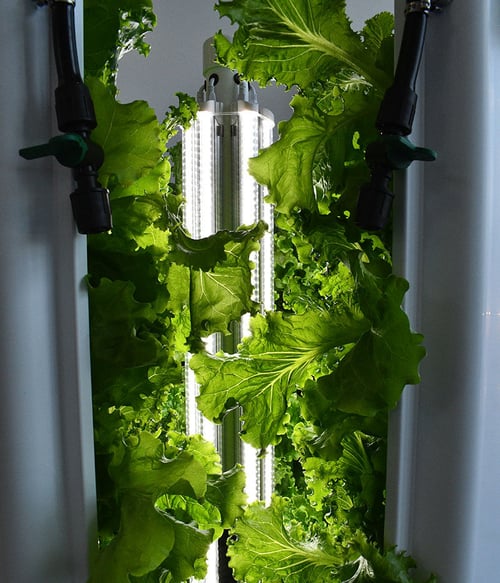How to Maximize Hand-on Learning in Science Class
Discover effective strategies to boost student engagement and understanding through hands-on learning in science class.
The Benefits of Hands-On Learning in Science
Hands-on learning in science provides numerous benefits for students. It allows students to actively engage with the subject matter, helping them better understand and retain information. By physically interacting with materials and conducting experiments, students can see firsthand how scientific concepts apply in real-world scenarios.
In addition, hands-on learning promotes critical thinking skills. Instead of just memorizing facts, students are encouraged to go a step beyond and think analytically and build problem-solving skills. They can explore different possibilities and develop creative solutions to scientific challenges.
Furthermore, hands-on learning creates a sense of curiosity and excitement in students. It encourages them to ask questions, seek answers, and explore their interests in science. This can lead to a deeper passion for the subject and inspire students to pursue further studies or careers in science.
Overall, hands-on learning in science not only enhances the understanding and retention of scientific concepts but also promotes critical thinking and a lifelong love for learning.
Designing Engaging Hands-On Activities
When designing hands-on science learning activities, it's important to consider the interests and learning styles of students. One effective strategy is to incorporate real-world applications and scenarios into the activities. This helps students see the relevance of the concepts they are learning and increases their engagement. Additionally, allowing flexibility and creativity within the activities can further enhance engagement. Allowing students to make choices and explore different approaches can increase their motivation and involvement.
Incorporating elements of gamification can make hands-on science activities more engaging. Adding elements such as challenges, competitions, or rewards can create a sense of excitement and encourage students to participate actively. This approach transforms the educational experience into an engaging adventure, motivating students to actively participate and showcase their understanding of scientific concepts. Challenges serve as milestones for progress and problem-solving, competitions encourage friendly rivalry and collaboration, and a reward system reinforces positive behavior, creating a dynamic and enjoyable learning environment. Ultimately, gamification not only enhances engagement but also cultivates a positive attitude toward learning, acquiring knowledge a rewarding and exciting journey for students.
Integrating Technology for Enhanced Learning Including Hydroponic Gardens
Integrating technology into hands-on learning in science experiences can enhance student engagement and understanding. One way to do this is by using interactive simulations and virtual experiments. These digital tools allow students to explore and manipulate scientific concepts in a virtual environment, providing a unique and engaging learning experience.
Additionally, incorporating multimedia resources such as videos, animations, and interactive presentations can help illustrate complex scientific concepts and make them more accessible to students. This visual and interactive approach can enhance understanding and engagement.
Leveraging online platforms and resources can extend hands-on learning in science beyond the classroom. Assigning online research projects, virtual field trips, or collaborative online experiments can provide students with opportunities to engage with science in a digital environment, creating collaboration and expanding their learning experiences.
Integrating hydroponic technology into the classroom is a transformative hands-on learning strategy with numerous benefits. This innovative approach allows students to explore the principles of plant growth and nutrition in a controlled environment, enabling a deeper understanding of biology and environmental science. Hydroponics provides a tangible and engaging platform for students to witness firsthand how plants thrive without soil, emphasizing the importance of nutrient balance and efficient resource utilization.
Beyond science, this hands-on experience encourages curiosity, problem-solving, and teamwork. Students not only gain practical knowledge about sustainable agriculture but also develop a strong foundation in STEM concepts. By incorporating hydroponic technology, educators can inspire a new generation of learners with a passion for science and sustainability.
Overall, integrating technology into hands-on learning in science activities can provide students with dynamic and interactive learning experiences, enhancing their engagement and understanding of scientific concepts.
Creating a Collaborative Learning Environment
Creating a collaborative learning environment is essential for maximizing student engagement in hands-on learning in science activities. One strategy is to encourage group work and cooperative learning. Assigning group projects or experiments allows students to work together, share ideas, and learn from one another. This not only enhances engagement but also promotes teamwork and communication skills.
Another strategy is to create opportunities for peer-to-peer teaching and mentoring. Allowing students to take turns as leaders or experts in certain topics or activities can create a sense of responsibility and engagement. It also helps students develop a deeper understanding of the subject matter by teaching it to others.
Additionally, providing a supportive and inclusive classroom environment is crucial. Creating a safe space where students feel comfortable asking questions, sharing ideas, and making mistakes encourages active participation and engagement. Celebrating diversity and valuing different perspectives can also create a positive learning environment.
Furthermore, incorporating hands-on activities that require collaboration and teamwork, such as group experiments or problem-solving challenges, can create a sense of belonging and engagement among students.
Assessing and Reflecting on Hands-On Learning Experiences
Assessing and reflecting on hands-on learning experiences is essential for optimizing their effectiveness. One way to assess student learning is through formative assessments during hands-on activities. These can include quizzes, observations, or self-assessments that provide immediate feedback and help students gauge their understanding.
Another strategy is to incorporate reflective exercises after hands-on activities. This can involve asking students to write a reflection journal, participate in group discussions, or create presentations about their learning experiences. Reflecting on the process, outcomes, and challenges of the activities can deepen understanding and enhance engagement.
Gathering feedback from students about their experiences with hands-on activities can provide valuable insights for improvement. This can be done through surveys, interviews, or class discussions. Taking student feedback into account and making adjustments based on their suggestions can make the activities more effective and engaging.
It's important to continuously evaluate the effectiveness of hands-on activities and make improvements as needed. Regularly reviewing student performance, engagement levels, and feedback can help identify areas for enhancement and ensure that hands-on learning experiences are optimized.
Assessing and reflecting on hands-on learning experiences are crucial for maximizing their impact on student engagement and understanding.
Hydroponic Gardens Maximizes Hands-On Learning In Science
As mentioned earlier, integrating hydroponic technology into the classroom is a transformative hands-on learning strategy with numerous benefits. Notably, hydroponic farms, such as the Flex Farm, have the potential to positively impact students' lives by creating a connection with growing fresh food. At Fork Farms, we strongly believe that cultivating one's food holds the key to creating positive change, influencing engagement in schools, promoting a positive perception of fresh produce and improved nutrition, and building connections within the community.
Hydroponics in education offers an ideal platform for cultivating critical thinking, problem-solving, and inquiry-based learning skills. Students actively engage in the hydroponic growing process, encountering challenges that require them to maintain optimal growing conditions and troubleshoot issues like pH imbalances and nutrient deficiencies. These challenges prompt students to think creatively, analyze problems, and devise effective solutions. Consequently, students develop analytical thinking skills, make informed decisions, and implement solutions—a crucial aspect of their educational journey.
Fork Farms believes that hands-on learning through hydroponic growing is an empowering experience for students. In support of classrooms and educators, Fork Farms has developed a comprehensive K-12 curriculum designed to complement hydroponic growth in the system. This curriculum enables students to delve into STEM concepts, nutrition, and the principles of becoming sustainable global citizens. Through this integrated approach, students not only learn about the science behind hydroponics but also gain valuable insights into nutrition and sustainable practices.
Learn more about how Flex Farm has a transformative impact on students’ lives outside of the classroom.
Subscribe to our blogs
Is the Flex Farm right for you?
Connect with an expert member of our team and let’s work together to bring your growing experience to life. To help get you connected with the best person, please tell us where you are located.



